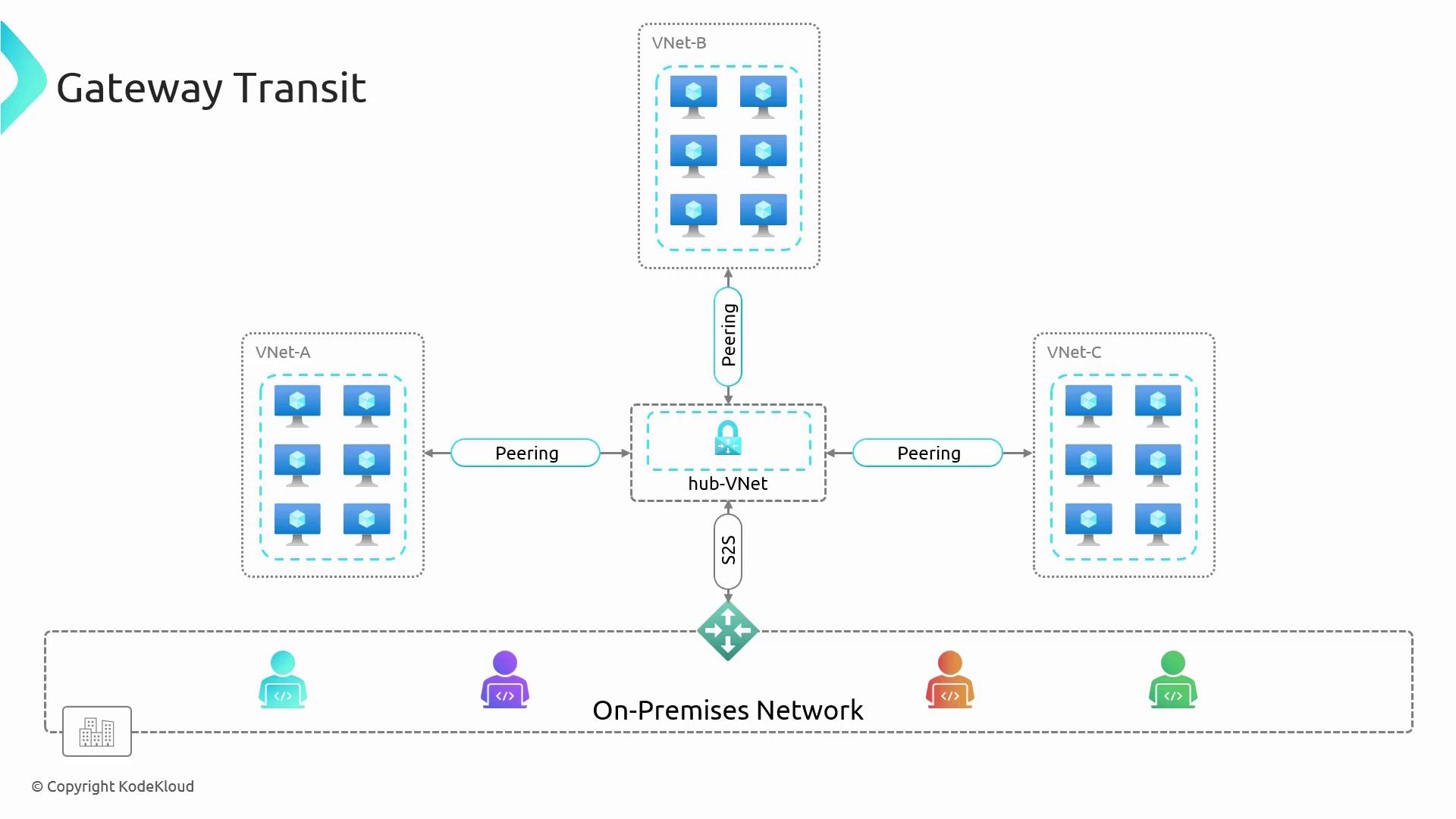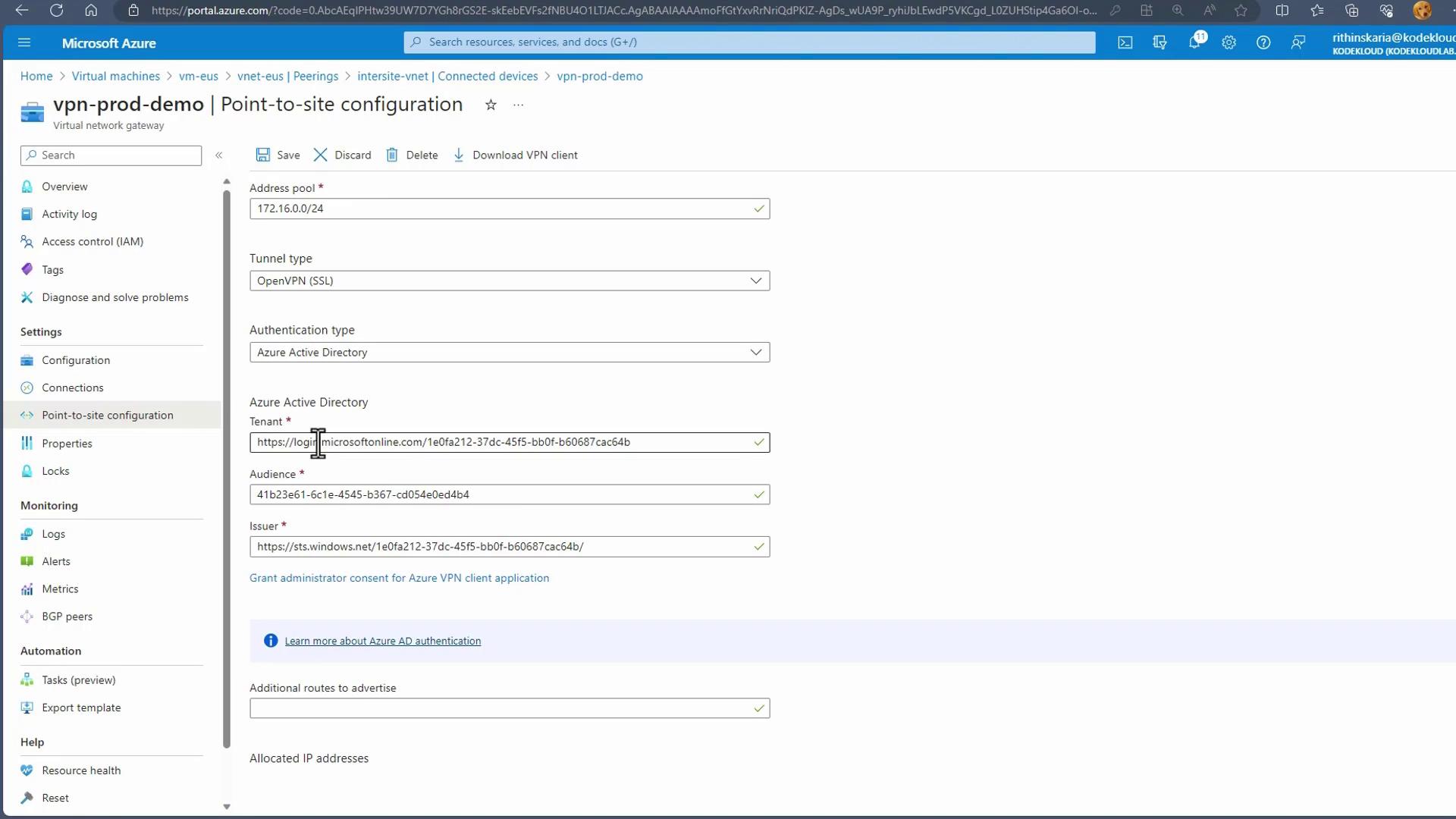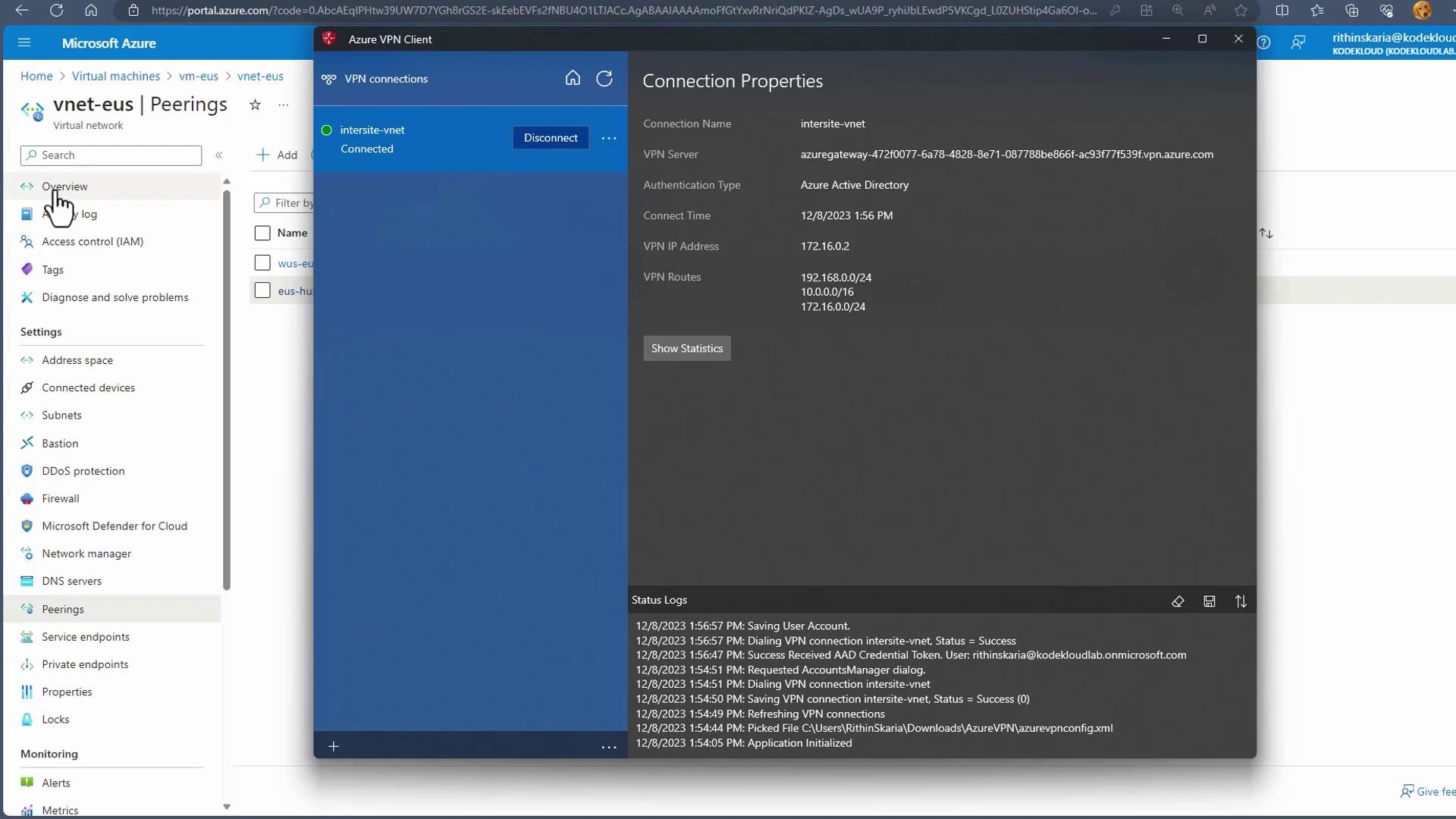[Updated] AZ-104: Microsoft Azure Administrator
Administer Intersite Connectivity
Gateway Transit
Overview
Gateway Transit is an Azure feature that simplifies network connectivity by using a single, shared, peered virtual network gateway rather than provisioning individual gateways for each virtual network (VNet). This design not only streamlines connectivity but also reduces management overhead and operational expenses.
Imagine you have three virtual networks—VNet A, VNet B, and VNet C—along with your on-premises network for developers. Traditionally, every VNet would require its own VPN gateway for a site-to-site connection to the on-premises network. This conventional approach leads to several challenges:
- Redundancy and Complexity: Managing separate VPN gateways for each VNet increases complexity and the risk of misconfigurations.
- Cost: Multiple VPN gateways incur additional charges, raising operational expenses.
- Resource Utilization: Valuable resources are tied up managing multiple gateways instead of being efficiently deployed elsewhere.
Key Benefit
Gateway Transit centralizes connectivity by using a hub-and-spoke design. Instead of establishing direct site-to-site connections from every VNet, each connects via peering to a central hub where a single virtual network gateway handles the connection to the on-premises network.
Hub-and-Spoke Architecture
In a Gateway Transit configuration, the hub VNet contains a single VPN gateway connected via a site-to-site link to the on-premises network. The benefits of this approach include:
- Centralized Management: Simplifies network topology with a single control point.
- Reduced Complexity: Eliminates the need for multiple individual gateways.
- Cost Efficiency: Reduces operational costs by requiring only one VPN gateway.
- Resource Optimization: Allows spoke VNets to allocate resources to other tasks.
- Streamlined Connectivity: Provides a low-latency path for inter-network traffic.
The diagram below illustrates the hub-and-spoke network architecture for Gateway Transit:

This architecture is a best practice in Azure landing zones and supports scalability, high performance, and effective cost management.
Demo Walkthrough: Point-to-Site VPN Connection
In this lesson, we demonstrate a point-to-site VPN connection, which allows direct access to Azure virtual machines over a private IP connection. The demo involves several configuration steps:
Configure Point-to-Site VPN:
Within Azure, a point-to-site VPN connection is set up using Azure Active Directory authentication.Establish VNet Peering:
A peering is created between the virtual network in East US (host to a VM) and the hub VNet that contains the VPN gateway. Gateway transit is enabled in the peering settings to properly route traffic to on-premises networks or other destinations.
The Azure portal displays the point-to-site VPN configuration as follows:

The following screenshot confirms the peering connection with the VPN gateway:

The next image illustrates the gateway transit configuration details in the peering setup:

After configuring the connection, you can establish a point-to-site session using the Azure VPN Client. The following image shows the VPN connection interface and status logs:

Verifying Connectivity
Below is an example demonstration using a Linux terminal. The steps show how to verify connectivity by pinging an Azure virtual machine and establishing an SSH connection over a private IP.
kodekLOUD@vm-eus:~$ ping 192.168.1.4
64 bytes from 192.168.1.4: icmp_seq=120 ttl=64 time=72.8 ms
64 bytes from 192.168.1.4: icmp_seq=121 ttl=64 time=72.4 ms
64 bytes from 192.168.1.4: icmp_seq=122 ttl=64 time=72.3 ms
--- 192.168.1.4 ping statistics ---
12 packets transmitted, 12 received, 0.163% packet loss, time 123604ms
rtt min/avg/max/mdev = 72.338/72.841/75.112/0.729 ms
kodekLOUD@vm-eus:~$ ip address
1: lo: <LOOPBACK,UP,LOWER_UP> mtu 65536 qdisc noqueue state UNKNOWN group default
link/loopback 00:00:00:00:00:00 brd 00:00:00:00:00:00
inet 127.0.0.1/8 scope host
inet6 ::1/128 scope host
2: eth0: <BROADCAST,MULTICAST,UP,LOWER_UP> mtu 1500 qdisc mq state UP group default
link/ether 00:0d:34:55:89:36 brd ff:ff:ff:ff:ff:ff
inet 192.168.0.4/24 brd 192.168.0.255 scope global eth0
inet6 fe80::20d:3aff:fe55:8936/64 scope link
kodekLOUD@vm-eus:~$ ssh [email protected]
The authenticity of host '192.168.1.4 (192.168.1.4)' can't be established.
ED25519 key fingerprint is SHA256:gwSm0n3l4fYqCQVYGHYMN0wFbduhdUwJ4K/9Co9Gs.
This key is not known by any other names.
Are you sure you want to continue connecting (yes/no/[fingerprint])? yes
Warning: Permanently added '192.168.1.4' (ED25519) to the list of known hosts.
[email protected]'s password:
A similar process can be executed in a Windows environment using PowerShell. Use the following command to establish an SSH connection over the private IP:
PS C:\> ssh [email protected]
The authenticity of host '192.168.0.4 (192.168.0.4)' can't be established.
ED25519 key fingerprint is SHA256:tQXst535TmKurM5PHX5ZTozvQskMiiJ4VLnFdjy/70.
This host key is known by the following other names/addresses:
C:\Users\RithinSkaria\.ssh\known_hosts:54: 172.191.37.104
Are you sure you want to continue connecting (yes/no/[fingerprint])? yes
[email protected]'s password:
After connecting, verify network connectivity by running a ping command:
PS C:\> ping 192.168.0.4
Pinging 192.168.0.4 with 32 bytes of data:
Reply from 192.168.0.4: bytes=32 time=199ms TTL=64
Reply from 192.168.0.4: bytes=32 time=198ms TTL=64
Reply from 192.168.0.4: bytes=32 time=197ms TTL=64
Ping statistics for 192.168.0.4:
Packets: Sent = 3, Received = 3, Lost = 0 (0% loss)
Approximate round trip times in milli-seconds:
Minimum = 197ms, Maximum = 199ms, Average = 198ms
Summary
By setting up a point-to-site connection to the virtual network gateway, you enable routing through a peered virtual network using Gateway Transit. As a result, VNets A, B, and C can securely access on-premises resources through a single, centralized gateway.
With the Gateway Transit configuration successfully completed, the next topic in this lesson will cover user-defined routes. This further enhances network routing by allowing more granular control over traffic flows across your Azure environment.
Watch Video
Watch video content